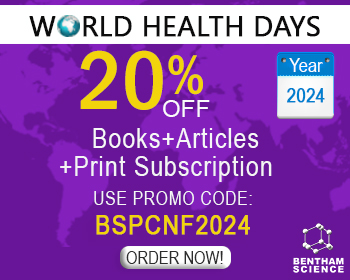Abstract
Atherosclerosis is a chronic inflammatory disease of the arterial wall and an increasing body of evidence suggests that the immune system actively participates in the initiation, progression and persistence of atherosclerosis. Different types of leukocytes such as T and B lymphocytes, natural killer cells (NK) and NKT cells, macrophages, dendritic cells and mast cells have been found within atherosclerosis-prone aortas. The mechanisms of monocyte recruitment have been partially characterized and involve P-selectin, E-selectin, VCAM-1, ICAM-1 and JAM-A. CXCL1, CCL5, CXCL4, CXCL7 and MIF are also implicated in monocyte trafficking into aortas. Recently it has been reported that Ly6Chigh and Ly6Clow monocyte subsets differently use CCL2, CX3CL1 and CCL5 for their homing into atherosclerotic aortas. T and B lymphocytes constitutively migrate into the normal and atherosclerotic aortic wall in an L-selectin-dependent manner. Recent studies suggest an important role of CCL5, CXCL10, CXCL16, CXCR6 and MIF in T cell influx into the atherosclerotic wall. However, there is little information available on the mechanisms of recruitment of other types of the immune cells such as NK, NKT and mast cells. In this review we shall summarize what is known about leukocyte recruitment into the aortic wall during atherosclerosis with a focus on mouse model systems.
Keywords: Atherosclerosis, pathophysiology, leukocyte, trafficking
Current Drug Targets
Title: Leukocyte Influx in Atherosclerosis
Volume: 8 Issue: 12
Author(s): Elena Galkina and Klaus Ley
Affiliation:
Keywords: Atherosclerosis, pathophysiology, leukocyte, trafficking
Abstract: Atherosclerosis is a chronic inflammatory disease of the arterial wall and an increasing body of evidence suggests that the immune system actively participates in the initiation, progression and persistence of atherosclerosis. Different types of leukocytes such as T and B lymphocytes, natural killer cells (NK) and NKT cells, macrophages, dendritic cells and mast cells have been found within atherosclerosis-prone aortas. The mechanisms of monocyte recruitment have been partially characterized and involve P-selectin, E-selectin, VCAM-1, ICAM-1 and JAM-A. CXCL1, CCL5, CXCL4, CXCL7 and MIF are also implicated in monocyte trafficking into aortas. Recently it has been reported that Ly6Chigh and Ly6Clow monocyte subsets differently use CCL2, CX3CL1 and CCL5 for their homing into atherosclerotic aortas. T and B lymphocytes constitutively migrate into the normal and atherosclerotic aortic wall in an L-selectin-dependent manner. Recent studies suggest an important role of CCL5, CXCL10, CXCL16, CXCR6 and MIF in T cell influx into the atherosclerotic wall. However, there is little information available on the mechanisms of recruitment of other types of the immune cells such as NK, NKT and mast cells. In this review we shall summarize what is known about leukocyte recruitment into the aortic wall during atherosclerosis with a focus on mouse model systems.
Export Options
About this article
Cite this article as:
Galkina Elena and Ley Klaus, Leukocyte Influx in Atherosclerosis, Current Drug Targets 2007; 8 (12) . https://dx.doi.org/10.2174/138945007783220650
| DOI https://dx.doi.org/10.2174/138945007783220650 |
Print ISSN 1389-4501 |
| Publisher Name Bentham Science Publisher |
Online ISSN 1873-5592 |
Call for Papers in Thematic Issues
New drug therapy for eye diseases
Eyesight is one of the most critical senses, accounting for over 80% of our perceptions. Our quality of life might be significantly affected by eye disease, including glaucoma, diabetic retinopathy, dry eye, etc. Although the development of microinvasive ocular surgery reduces surgical complications and improves overall outcomes, medication therapy is ...read more
 35
35
- Author Guidelines
- Graphical Abstracts
- Fabricating and Stating False Information
- Research Misconduct
- Post Publication Discussions and Corrections
- Publishing Ethics and Rectitude
- Increase Visibility of Your Article
- Archiving Policies
- Peer Review Workflow
- Order Your Article Before Print
- Promote Your Article
- Manuscript Transfer Facility
- Editorial Policies
- Allegations from Whistleblowers
Related Articles
-
Heme Oxygenase Overexpression Attenuates Glucose-Mediated Oxidative Stress in Quiescent Cell Phase: Linking Heme to Hyperglycemia Complications
Current Neurovascular Research Targeting SUMOylation Cascade for Diabetes Management
Current Drug Targets Gauging Reactive Metabolites in Drug-Induced Toxicity
Current Medicinal Chemistry Molecular Docking and Virtual Screening Based Prediction of Drugs for COVID-19
Combinatorial Chemistry & High Throughput Screening Vitamin D : Autoimmunity and Gender
Current Medicinal Chemistry Novel Therapies Based on Cationic Antimicrobial Peptides
Current Pharmaceutical Biotechnology Argemone mexicana: A Boon to Medicinal and Pharmacological Approaches in Current Scenario
Cardiovascular & Hematological Agents in Medicinal Chemistry Periodontitis and Periodontal Disease - Innovative Strategies for Reversing the Chronic Infectious and Inflammatory Condition by Natural Products
Current Pharmaceutical Design Pituitary Dysfunction as a Cause of Cardiovascular Disease
Current Pharmaceutical Design Insulin Resistance in Nonalcoholic Fatty Liver Disease
Current Pharmaceutical Design Rheumatoid Arthritis: An Evolutionary Force in Biologics
Current Pharmaceutical Design Herb-Drug Interactions and Mechanistic and Clinical Considerations
Current Drug Metabolism Nitric Oxide and its Role During Pregnancy: From Ovulation to Delivery
Current Pharmaceutical Design Drugs Targeting the Canonical NF-κB Pathway to Treat Viral and Autoimmune Myocarditis
Current Pharmaceutical Design Do Not Say Ever Never More: The Ins and Outs of Antiangiogenic Therapies
Current Pharmaceutical Design Incidence of Side Effects During Therapy with Different Types of Alpha Interferon: A Randomised Controlled Trial Comparing Recombinant Alpha 2b Versus Leukocyte Interferon in the Therapy of Naive Patients with Chronic Hepatitis C
Current Pharmaceutical Design Biomedical Perspectives of Acute and Chronic Neurological and Neuropsychiatric Sequelae of COVID-19
Current Neuropharmacology The Relationship Between Inflammation, Dyslipidemia and Physical Exercise: From the Epidemiological to Molecular Approach
Current Diabetes Reviews Phytotherapeutic and Natural Compound Applications for Age-Related, Inflammatory and Serious Eye Ailments
Current Molecular Pharmacology Recent Advances in Antiviral Activity of Benzo/Heterothiadiazine Dioxide Derivatives
Current Medicinal Chemistry























